Glycymeris septentrionalis (Carpenter, 1864)Common name(s): Western bittersweet shell, Pacific coast bittersweet, California bittersweet, Button shell |
|
| Synonyms: Glycymeris subobsoleta, Axinola subobsoleta | 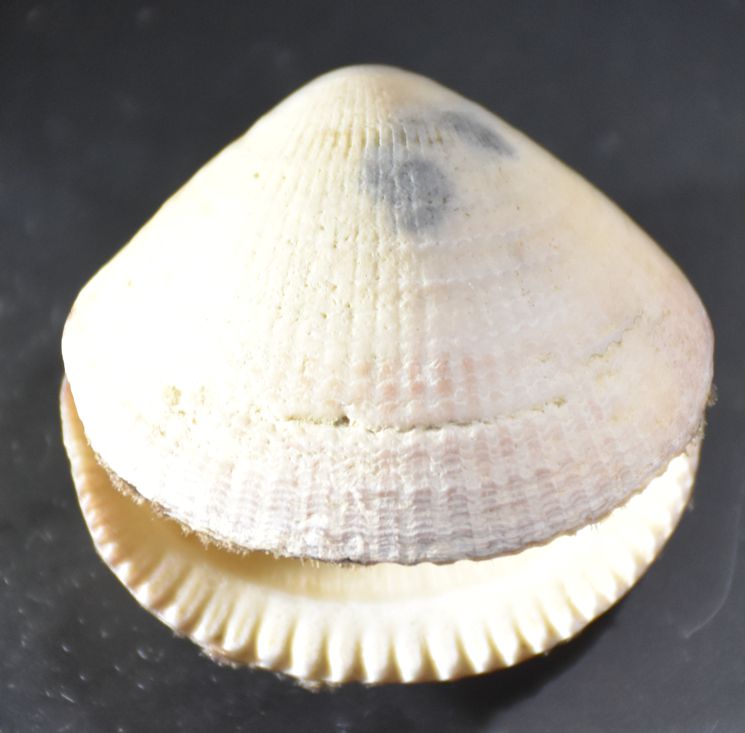 |
|
Phylum Mollusca
Subclass Pteriomorpha
Order Arcoida
|
|
| Glycymeris septentrionalis shell, length 3.5 cm, trawled by benthic sled from 135 m depth in mid-San Juan Channel. This empty shell does not have any periostracum left. Note the worn-appearing but still readily apparent radial ribs on the outside of the shell, and the prominent teeth along the inner ventral margin of the shell. | |
| (Photo by: Dave Cowles, July 2018) | |
Description: Family Glycymerididae is one of the few local families which have taxodont dentition (photo). They typically have thick shells and also have an external hinge ligament (photo), radial ribs (photo), and their length is about the same as their height. Glycymeris septentrionalis has well-developed radial ribs that often look worn (see photo above). The taxodont dentition is about 15 teeth total, with the groups anterior and posterior to the central hinge clearly separated from each other. It also has pronounced tooth-like ridges along the inner ventral margin of the shell (see photo above). The beaks (umbones) are nearly central and the hinge line, which occurs at the same place, is arched instead of straight. The outside of the shell has a thick, dark brown periostracum which may be worn off except along the ventral margin. The interior of the shell may have yellow or purplish-brown areas. Length up to 4.5 cm.
How to Distinguish from Similar Species:Glycymeris corteziana is a rare species which is also subtidal but has very faint to microscopic radial ribs. It has about 20 taxodont teeth, with the anterior and posterior sets close together. Its periostracum is thin and tan. At first glance G. septentrionalis looks similar to the littleneck clam, Leukoma staminea, which also has radial ribs, a similar shell shape, and tooth-like serrations on the inside margins of the ventral shell margin. However, L. staminea does not have taxodont dentition at the hinge and is often found intertidally.
Geographical Range: Alaska to Baja California (uncommon in California)
Depth Range: Intertidal to 55 m (primarily subtidal)
Habitat: Sandy or gravelly bottoms
Biology/Natural History: Order Arcoida
is mainly tropical, and most have taxodont dentition.
| Return to: | |||
| Main Page | Alphabetic Index | Systematic Index | Glossary |
References:
Dichotomous Keys:Carlton, 2007 (briefly mentioned)
Kozloff, 1987, 1996 (as G. (Axinola)subobsoleta)
General References:
Harbo,
1997
Keen
and Coan, 1974
Lamb
and Hanby, 2005
Morris,
1966 (as G. subobsoleta)
Scientific Articles:
Web sites:
General Notes and Observations: Locations, abundances, unusual behaviors:
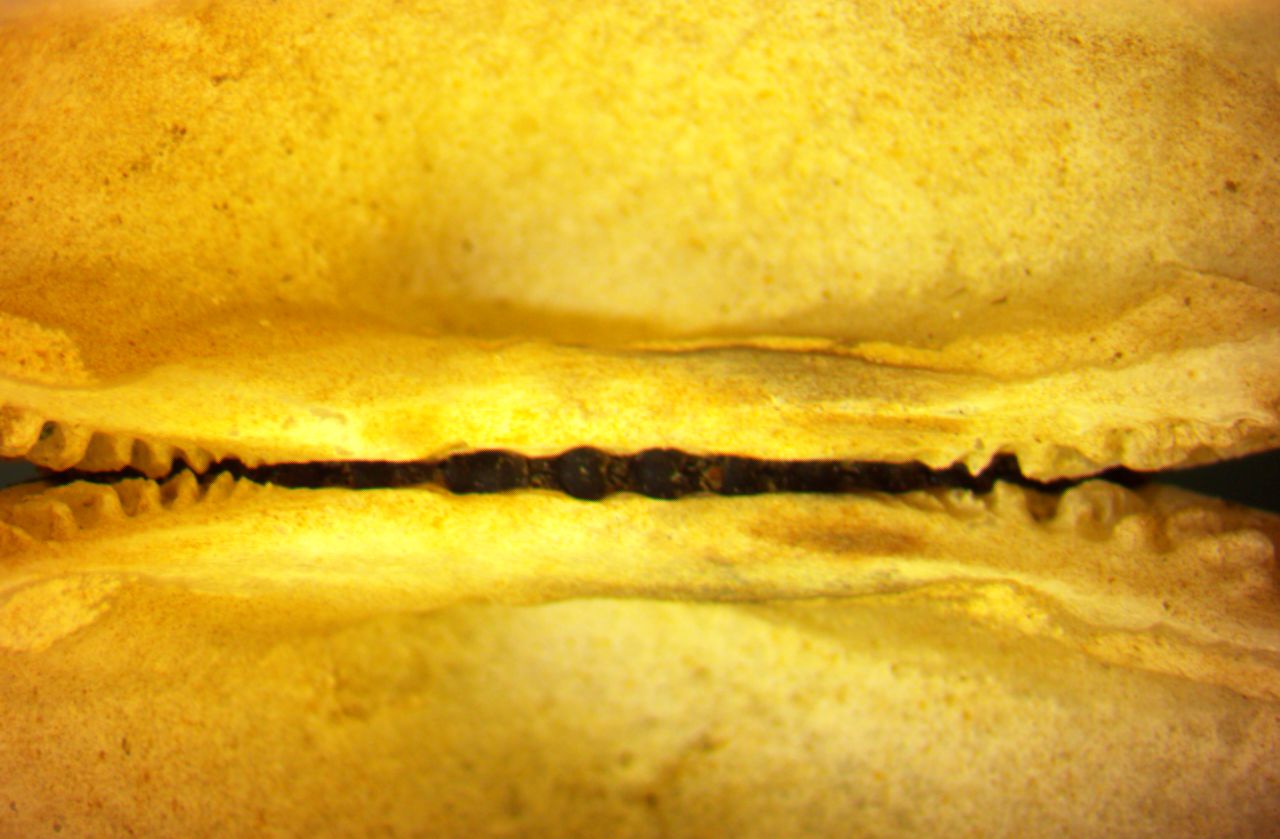
This inner view of the hinge shows the two groups of taxodont
dentition which are widely separated from one another in the area of
the hinge ligament.
Note also that the hinge
ligament, though visible internally, is primarily external.
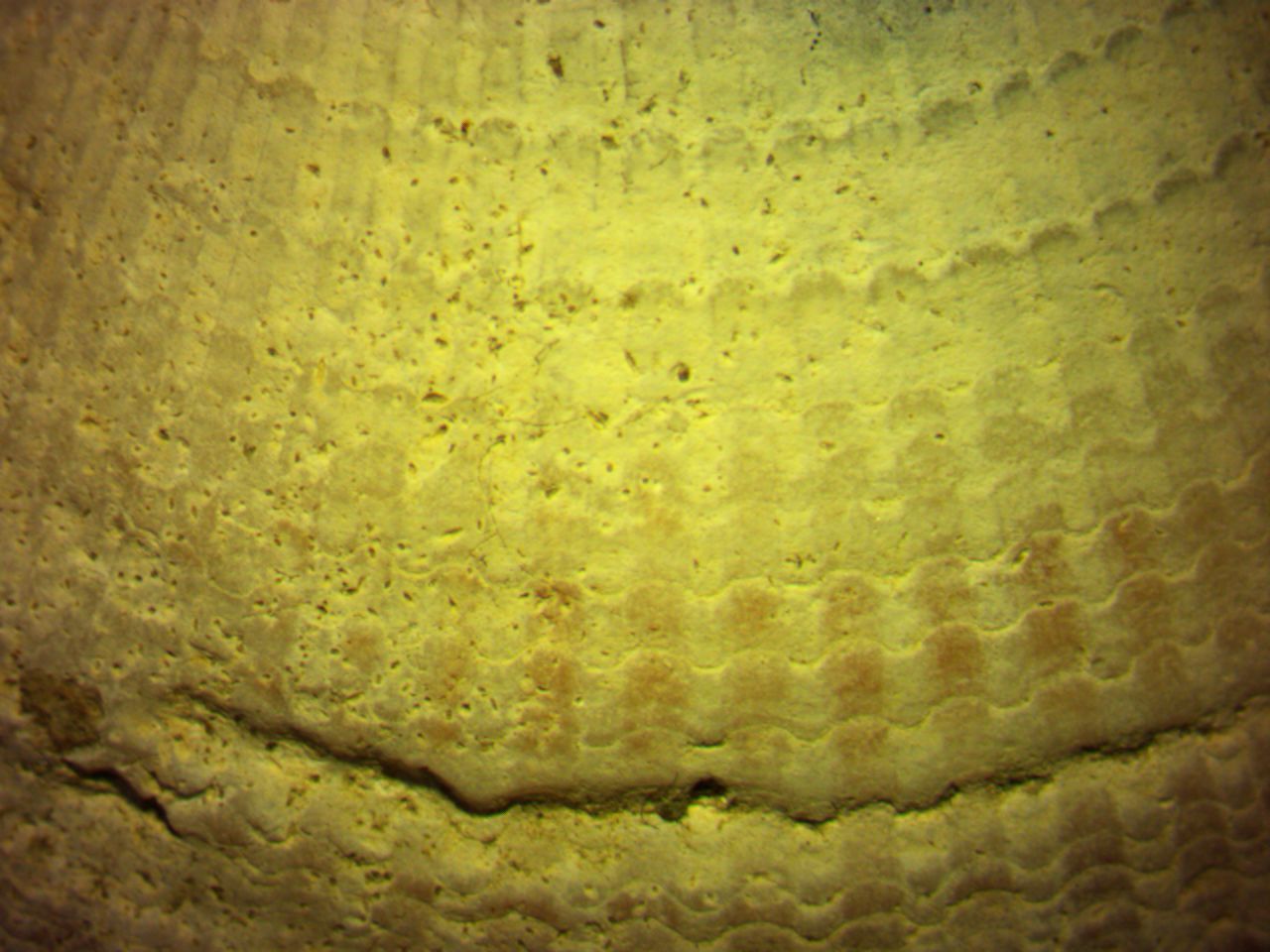
The external radial
ribs look worn.

The dark brown periostracum
may be mostly located along the ventral
margin of the shell.
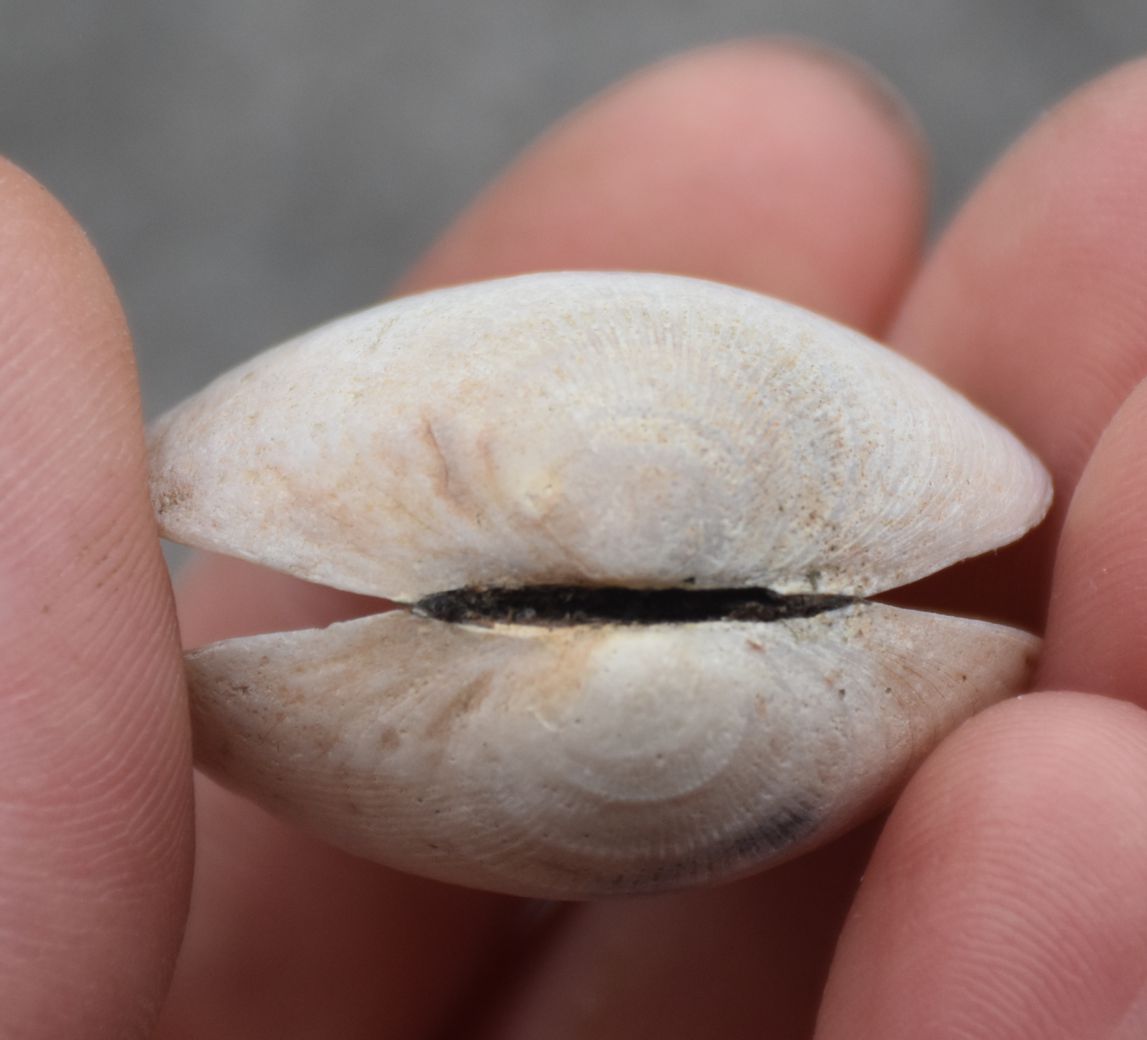
The hinge
ligament is external (located externally to the hinge and most visible
from the outside rather than from the inside)..
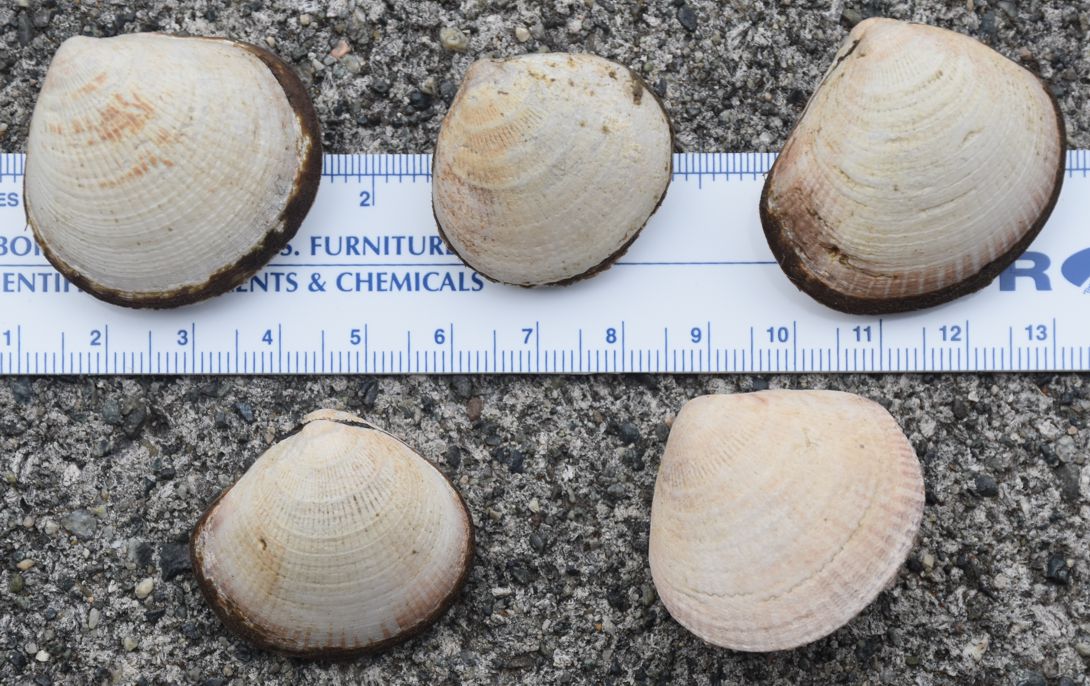
A group of individuals, all from 135m depth in San Juan Channel
2018. The lower right individual is an empty shell. The scale is in cm.
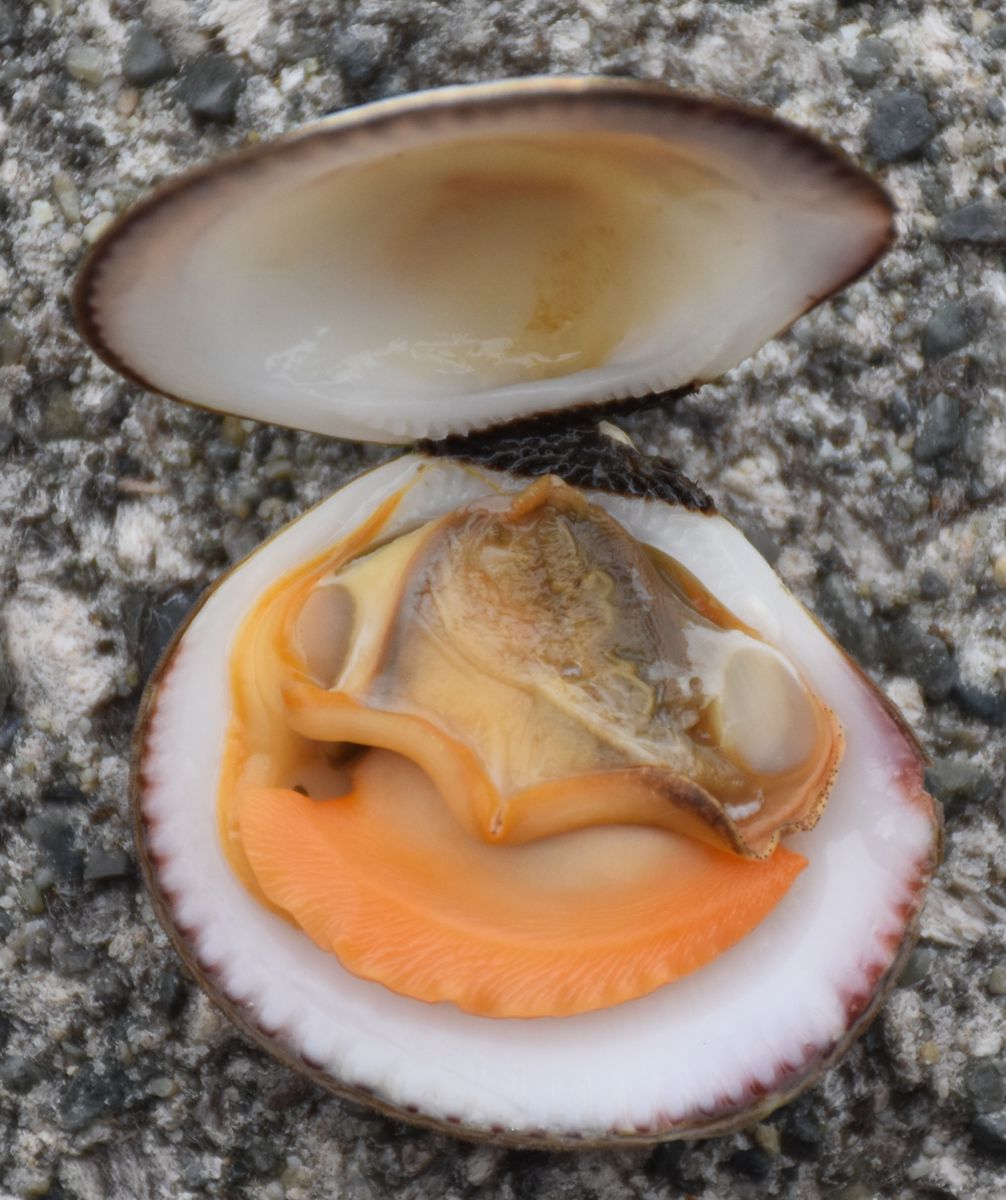
The foot of this species, which is the most prominent organ seen here,
is bright orange. The fact that the foot is projecting to the left in this
image shows that the left side of the view is the anterior
end of the clam.
Authors and Editors of Page:
Dave Cowles (2018): Created original page
CSS coding for page developed by Jonathan Cowles
Salish Sea Invertebrates web site provided courtesy of Walla
Walla University